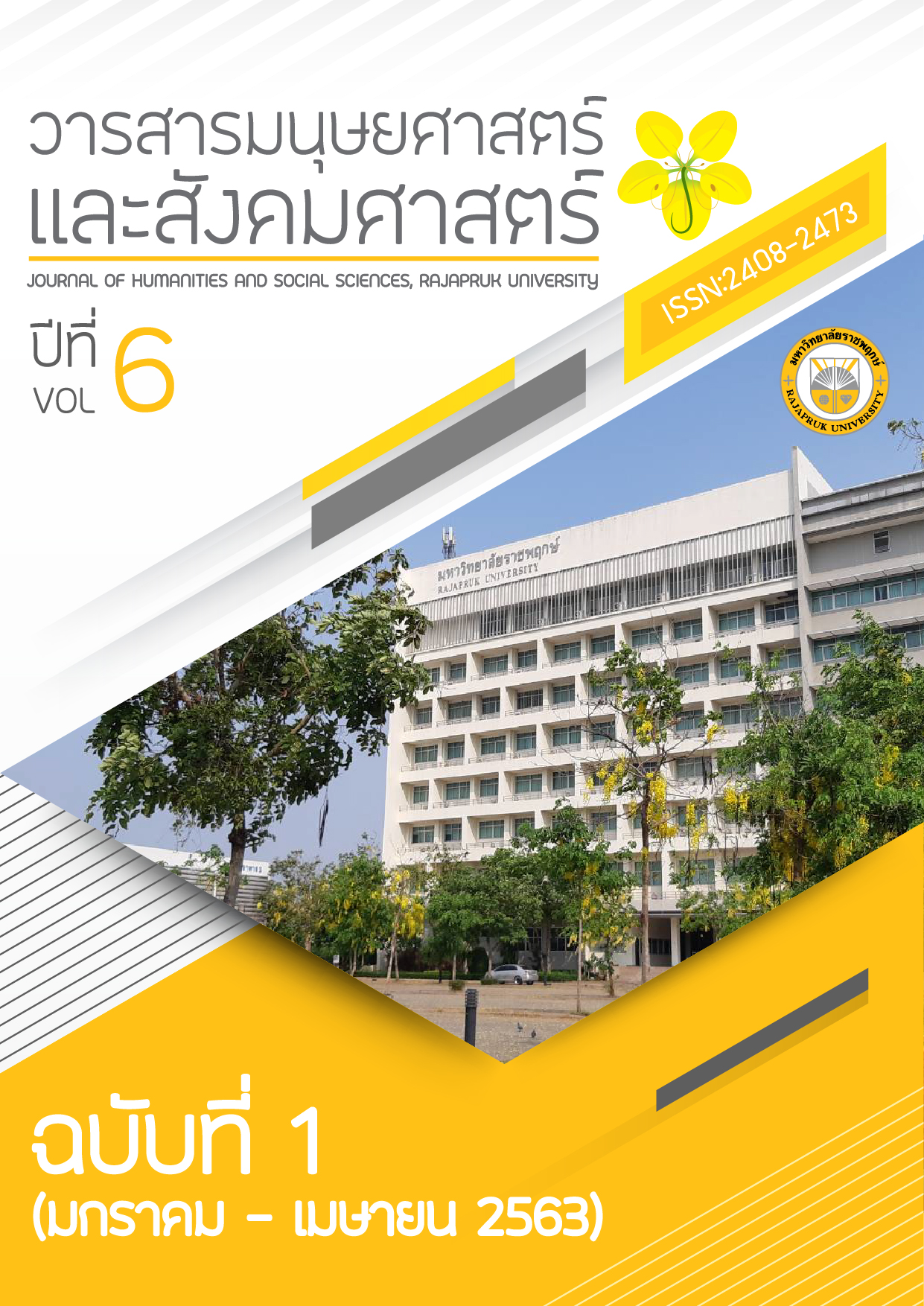Development of the Quality of Life of the Elderly Persons in Nonthaburi Municipality, Nonthaburi Province
Main Article Content
Abstract
The objectives of this research were: 1) to study the quality of life level and quality of life development based on demographic characteristics of the elderly in Nonthaburi Municipality, Nonthaburi Province 2) to study the difference of the quality of life level of the elderly in Nonthaburi Municipality, Nonthaburi Province, classifying by demographic characteristic and 3) to study the relationship between quality of life development and quality of life of the elderly in Nonthaburi Municipality, Nonthaburi Province. Mixed methods research was used in this study. For qualitative research method, the target group included 2 executives of Nonthaburi Municipality. In-depth interview was conducted to collect information. For quantitative research method, the sample was group consisted of convenience sampling of 400 elders in Nonthaburi Municipality, Nonthaburi Province. Questionnaires were used to collect data, The statistics were used for data analysis including with frequency, percentage, average, standard deviation, t-test, One-way ANOVA and Pearson’s Correlation Coefficient. The results of the research were as follows: 1) The Overall level of quality of life development of the elderly in Nonthaburi Municipality, Nonthaburi Province, was high level. There was social support at the highest level, following by environmental management, participation, and health promotion, ranked in descending order of mean scores, 2) The Overall of Quality of life level of the elderly of Nonthaburi Municipality, Nonthaburi Province, was high level. There was environment at the highest level, following by social relationship, mind, and body, and 3) The quality of life development in overall was positively related to quality of life of the elderly in high level, which was statistically significant at .01 levels, according to the hypothesis. 4) Based on the interview with the executives of Nonthaburi Municipality, it was concluded that Nonthaburi Municipality’s development of quality of life in various aspects affected overall quality of life of the elderly. When the elderly was developed in every respect, they will have a better quality of life.
Article Details
References
กรมส่งเสริมการปกครองท้องถิ่น. (2561). จำนวนประชากรผู้สูงอายุในเขตเทศบาลนครนนทบุรี. ค้นเมื่อวันที่ 26 มีนาคม 2561, จาก http://www.dla.go.th/
กรมอนามัย กระทรวงสาธารณสุข. (2557). คู่มือการดำเนินงานเมืองที่เป็นมิตรกับผู้สูงอายุ กันยายน 2557. กรุงเทพฯ: สำนักกิจการโรงพิมพ์องค์การสงเคราะห์ทหารผ่านศึก.
นงเยาว์ อรุณศิริวงศ์. (2550). การพัฒนาคุณภาพชีวิต. นนทบุรี: มหาวิทยาลัยสุโขทัยธรรมาธิราช.
บุญชม ศรีสะอาด. (2553). การวิจัยเบื้องต้น. พิมพ์ครั้งที่ 8. กรุงเทพฯ: บริษัท สุวีริยาสาส์น จำกัด.
มหาวิทยาลัยธรรมศาสตร์ คณะสังคมสงเคราะห์ศาสตร์. (2558). โครงการการพัฒนาระบบส่งเสริมสุขภาพผู้สูงอายุแบบองค์รวมในเขตุเทศบาลนครนนทบุรี การวิจัยโครงการระยะที่1 “การสำรวจสุขภาวะองค์รวมของผู้สูงอายุในเขตุเทศบาลนครนนทบุรี”. กรุงเทพฯ: จรัลสนิทวงศ์การพิมพ์.
มูลนิธิสถาบันวิจัยและพัฒนาผู้สูงอายุไทย. (2561). การรายงานสถานการณ์ผู้สูงอายุไทย พ.ศ.2560. กรุงเทพฯ: โรงพิมพ์เดือนตุลา.
สำนักงานคณะกรรมการพัฒนาการเศรษฐกิจและสังคมแห่งชาติ. (2560). ยุทธศาสตร์ชาติ ระยะ 20 ปี
พ.ศ.2560 - พ.ศ.2579. กรุงเทพฯ: สำนักงานคณะกรรมการพัฒนาการเศรษฐกิจและสังคมแห่งชาติ.
Kasperson, R.E. and Breitbank. (1974). Participation, Decentralization and Advocacy Planning. Resource. Washington D.C.: Association of American Geographers.
Lawton, M.P. (1975). Planning and managing housing for older people. New York: Joh Wiley & sons.
Lisk, F. (1985). Popular Participation in Planning For Basic Needs. Great Britain: Black More Press.
Pender, N. J. (1996). Health promotion in nursing practice. 3rd. ed. Stamford, Conn: Appleton and Lange.
Power, M. J., & Bullinger, M. (2002). The universality of quality of life: An empirical approach using the WHOQOL. Netherlands: Springer Netherlands.
Taro Yamane. (1973). Statistics: An Introductory Analysis. 3rd ed. New York. Harper and Row Publications.
UNESCO. (1978). Indicators of Environmental Quality and Quality of Life. Paris: UNESCO.
World Health Organization (WHO). (1993). Global Strategy for Health for All by the Year 2000. Geneva (Health for All) Series No. 6.
Wortman, C.B. (1984). Social support in the cancer patient. Conceptual and methodological issue. America Journal of the cancer society 53 May 1984: 25 – 34.


